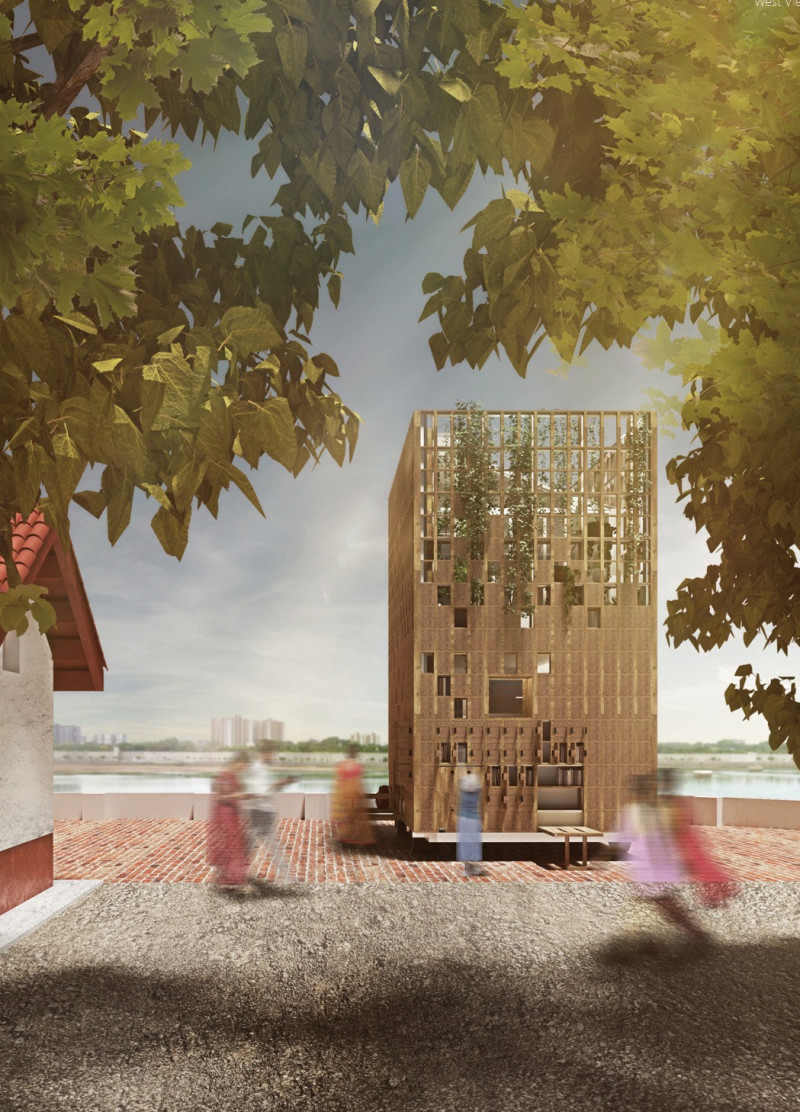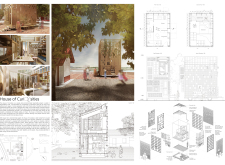5 key facts about this project
One of the primary functions of the House of Curiosities is to serve as a communal hub, promoting not only residential living but also social interaction among community members. The layout of the project emphasizes open spaces that facilitate gatherings and activities, thus encouraging inhabitants to engage with one another. Unlike many traditional residential architectures that prioritize privacy, this project invites sociability, making it a progressive model for contemporary living.
The design of the House of Curiosities is characterized by several significant elements that enhance its overall aesthetic and functional value. Key features include a dynamic facade that uses a blend of materials—reinforced concrete, recycled wood, glass, and metal. This varied materiality not only satisfies practical construction needs but also creates an engaging visual language that resonates with the local context. The use of glass in particular allows ample natural light to enter the spaces, reducing the need for artificial lighting and further supporting the project’s sustainability goals.
Another important aspect of the design is the strategic arrangement of its structures. The first floor is dedicated to communal spaces, including the kitchen, dining area, and living room, all of which are designed to be open and inviting. The second floor offers private quarters, ensuring that residents have the comfort of personal space. This thoughtful zoning of areas within the project highlights a balance between communal and individual needs, underpinning the concept of shared living while respecting privacy.
A unique design approach is evident in the incorporation of green roof systems and extensive landscaping. These elements not only enhance the ecological footprint of the building but also create spaces for biodiversity and recreational opportunities. The landscapes serve as natural buffers, improving air quality and offering residents a direct connection to nature. By integrating greenery into the architectural design, the project fosters a sense of tranquility and promotes well-being.
The architectural plans illustrate a clear vision that merges functionality with ecological awareness. It emphasizes natural ventilation and sustainable living practices, showcasing how modern architecture can honor traditional values while addressing current environmental challenges. The overall visual impact of the House of Curiosities is enhanced by its connection to the surrounding community, informed by local materials and craftspeople, making it an architecture that is rooted in place and culture.
The House of Curiosities represents a thoughtful exploration of what modern living can look like, where sustainability, community, and aesthetic considerations intertwine seamlessly. Each design element serves a purpose while contributing to the overarching narrative of curiosity—inviting exploration, interaction, and discovery.
To truly appreciate the architectural innovation behind the House of Curiosities, readers are encouraged to delve into its architectural designs, architectural sections, and architectural ideas. Exploring these aspects will provide a deeper understanding of how this project effectively blends contemporary architecture with social and environmental consciousness. For more insights into this compelling project, one can examine its architectural plans in detail, allowing for a comprehensive appreciation of the intricate thought processes that shape the House of Curiosities.























